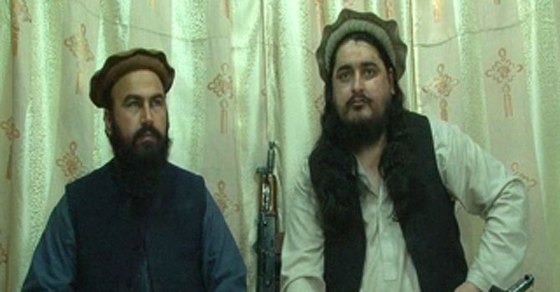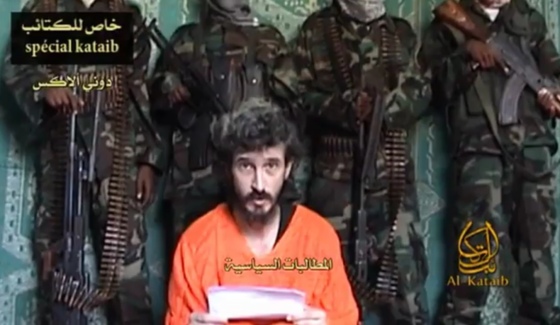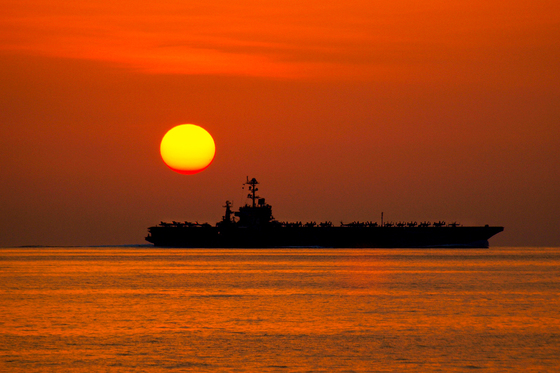
First Look: 2014 Chevrolet CorvetteJan 13, 2013 , By Eric Tingwall / Photos by A. J. Mueller

2014 Chevrolet Corvette Front Right ViewSee Full Gallery
Four years ago, the Corvette team first weighed the idea of reviving the historic Stingray moniker for the C7 Corvette. They made the decision only six months ago. It took that long to come to a verdict because neither design VP Ed Welburn nor chief engineer Tadge Juechter nor marketing manager Harlan Charles would make the call until they could confidently say their car delivered the looks, the performance, and the character to live up to the 1963-67 Chevrolet Corvette Sting Ray. As automotive design editor Robert Cumberford notes in his analysis, the seventh generation of America's sports car is unmistakably a Corvette without resorting to pastiches. The new Vette accelerates quicker, stops shorter, and grips harder in corners. And Corvette engineers promise an enlightened driving experience. The C7 Corvette is, by every measure, worthy of the Stingray name. Corvette tradition soldiers on under the hood as well, with a new small-block V-8. The 4.4-inch bore spacing has roots in 1955, and the 6162-cubic-centimeter displacement is a remnant from last year's Corvette, yet the number of carryover parts in the new LT1 is in the single digits. New features include variable valve timing, direct injection, and cylinder deactivation, which turns the 6.2-liter V-8 into a 3.1-liter V-4 during low-load cruising. Overhead cams were left out in an effort to keep the engine height -- and the hoodline -- low, and engineers didn't shrink displacement because a smaller engine means fewer opportunities to operate in four-cylinder mode.
See all 23 Photos<>"There won't be a Corvette if we don't care about fuel economy," Juechter says. "We can't drag General Motors' Corporate Average Fuel Economy numbers down." To that end, the C7 should deliver incremental gains over last year's 16/26 mpg EPA city/highway rating. Fortunately, a more efficient engine also leads to a more powerful engine. The LT1 sees modest output improvements over the old LS3, to 450 hp at 6000 rpm and 450 lb-ft of torque at 4000 rpm. Chevrolet promises a 0-to-60-mph time of less than four seconds. To keep pace with the Porsche 911, the Corvette will introduce the industry's second seven-speed manual transmission when it arrives in late 2013. The seventh gear stretches the ratio spread from 5.32 in the C6 to 6.33. Curiously, a Corvette with a clutch pedal will also come with paddle shifters. In manual cars, they activate and disable the automatic rev-matching program. We're grateful to hear there's a defeat for the software, but paddles are awfully prominent for a feature you're un-likely to toggle between very often. The automatic transmission is still a six-speed married to the engine via torque converter. That it's not a dual-clutch gearbox or an eight-speed is a matter of torque: no one sells a dual-clutch transaxle that can handle the LT1's torque (unless Porsche is interested in becoming a Corvette supplier), and Chevrolet wasn't in a position to develop one; additional gears offer negligible benefits for the big V-8 engine that makes so much low-end torque. "When we can offer better fuel economy and better performance with more gears, we will do it," Juechter says. The one significant improvement we can have now is a pair of proper shift paddles, larger than in the C6, with the left handling downshifts and the right managing upshifts. A driving-mode selector located just behind the shifter signals the Corvette's arrival to the electronic age. Weather, Eco, Tour, Sport, and Track modes alter up to twelve parameters: the digital gauge cluster, throttle mapping, shift points, cylinder deactivation, active exhaust, electronic limited-slip differential, steering effort, magnetic ride control, launch control, stability control, traction control, and Performance Traction Management. The C7 also makes the daunting transition from hydraulically assisted steering to electric power steering. We're hopeful, though, as General Motors has shown increasing prowess at calibrating electric steering, with the Camaro ZL1 serving as a testament to the engineers' capabilities. Feedback should also benefit from a steering structure (the rack, the column, the tilt/telescope mechanism, and their mountings) that is five times stiffer. The C6's suspension arrangement of control arms and transverse leaf springs carries over, but fitting Michelin Pilot Super Sport tires as standard equipment will help the base Corvette produce a lateral-grip figure in excess of 1 g. The old car's sliding- caliper brakes have been replaced with fixed four-piston Brembo calipers front and rear that chop the 60-to-0-mph stopping distance by eleven feet. That puts the base C7 on par with the Z06. Until Z06 and ZR1 replacements arrive, the Z51 performance package is the hot ticket. It features revised gear ratios, a dry-sump oil system, an electronically controlled limited-slip differential, brake-cooling ducts, slotted rotors, and transmission and differential coolers. A lip spoiler and an underbody tray help it generate more downforce than a ZR1. The Z51 package is also the gateway to Magnetic Ride Control, the adjustable magnetorheological dampers suited for both lumpy roads and glass-smooth racetracks. An aluminum frame, once the exclusive domain of the Z06 and the ZR1, is now the base for all Corvettes. The main rails are hydroformed, the crash structures are extruded, and the suspension mounting points are hollow cast for strict control over strength and weight, with wall thickness varying between two and eleven millimeters. Abandoning steel yields a structure that is 99 pounds lighter yet 57 percent stiffer than the C6 Corvette's. Another 37 pounds have been scraped from the body. The featherlight balsa wood sandwiched in the floorpan has been replaced with structural foam. The hood and roof are carbon fiber, the underbody trays are lighter, and the composite body panels now come from a lower-density material. Those weight savings quickly evaporate, however, when the Corvette is fitted with the equipment needed to meet modern expectations and safety standards. The new engine hardware and infotainment electronics add more than 30 pounds each. The torque tube between the engine and the transaxle is now steel, rather than aluminum, to quell vibrations during four-cylinder operation, and the door beams are beefier to perform better in new crash tests. So when Chevrolet announces the official weight figures later this year, expect a slight increase over the C6's 3208 pounds. The C7 is also larger, measuring 2.5 inches longer than its predecessor and within 0.2 inch of the Porsche 911. It is 1.3 inches wider and 0.4 inch lower, and, to keep weight distribution in check, the front wheels have been pushed forward one inch. The proportions are unmistakable, though. The C7's impossibly low hood, tall rear fenders, and wide stance are inspired by the outgoing Grand Sport model. The departure is most dramatic in the tapered greenhouse that sports the Corvette's first rear-quarter window since the 1962 model. The split rear glass, however, teased on the 2009 Stingray concept and rumored for production, was tossed. Designers say rearward visibility was decent but that the styling looked forced on prototypes. Instead, much of the C7 conversation will center around its squarish, Camaro-esque taillights. "These are our pop-up headlights," Juechter says, referencing the controversial move to fixed headlamps for the C6. That car's single-bulb round taillights may be iconic, but internally they were known as RV lights for their simplicity, and they didn't offer much of a stage for showing off the LEDs that the design team wanted to incorporate for the C7. The stylized solution also provides a connection to the vents, which serve as an outlet to the air inlets on top of the rear fender. Those vents send fresh air over the transmission and differential coolers and create a low-pressure area at the exit that improves aerodynamics. As expressive as the exterior is, Juechter characterizes the interior makeover as the single greatest change for the C7. At the top of the upgrade list were the seats and the steering wheel, perennial shortcomings for the Corvette. Chevrolet sent the interior designers to the track and then benchmarked Porsche and Recaro seats for lateral support. The result is two different seats to accommodate the Corvette's divergent customer set: a GT version and a Competition Sport seat. At the very least, the results look promising. And while the bolsters get larger, the steering wheel shrinks from 14.6 inches to 14.2 inches. Eight-inch screens are nested between analog gauges in the cluster and in the center stack. That center panel is canted toward the driver, and a grab handle in the console isolates the passenger from the touchscreen and the physical controls. The only consolation is a small rocker with a digital readout screen below the passenger-side dash vent that controls the temperature for that half of the cabin. At least passengers will be aware that they're riding in a $50,000-plus car. All interiors are fully wrapped in either premium vinyl or leather, with carbon-fiber, aluminum, and microsuede trim. The seventh-generation Corvette advances America's sports car with a more aggressive aesthetic, more advanced technologies, more power, and a more fitting cockpit. But the most exciting prospect of the C7 is something very familiar. When we look at the new Corvette, we get the same feeling as when we see a '63-'67 Sting Ray: we want to drive it. POWERTRAIN
Engine: 16-valve OHV V-8
Displacement: 6.2 liters (376 cu in)
Power: 450 hp @ 6000 rpm (est.)
Torque: 450 lb-ft @ 4000 rpm (est.)
Transmissions: 7-speed manual 6-speed automatic
Drive: Rear-wheel CHASSIS
Steering: Electrically assisted
Front suspension: Control arms, semi-elliptic spring
Rear suspension: Control arms, semi-elliptic spring
Brakes: Vented discs, ABS
Tires: Michelin Pilot Super Sport
Tire sizes F, R: 245/40R-18, 245/35R-19 MEASUREMENTS
L x W x H: 177.0 x 73.9 x 48.6 in
Wheelbase: 106.7 in
Weight: 3300 lb (est.)
Weight dist. F/R: 50/50% (est.)
Fuel mileage: 17/27 mpg (est.)
Design analysis
Sleek Our key question before seeing the C7 was, "Will it look like a Corvette?" One glance lets us say, most emphatically, that it does. The second was, "Does it look like a Corvette because it's plastered with historical references?" No, there's absolutely nothing retro about it. This is the cleanest, most honest Corvette prepared for sale to the public since the original 1953-55 C1. The C7 Corvette -- once again called Stingray -- is totally free of inauthentic styling fakery for the first time in fifty-eight years. Every opening in the C7's body surface is functional. If there is an inlet, air flows in. If there's an outlet, air comes out, having performed its specific task on the way.There are traces of previous fender profiles in the side view, but transverse sections are completely new, and the way surfaces are handled is completely novel for Corvettes. There are numerous subtle surface breaks that leave just-visible lines all over the body, emphasizing the sleekness of the overall form. If the body side sills are a bit convoluted, the ensemble is still cohesive and convincing, as a detailed look will show. The architecture is as before, but the effect is completely new. -- Robert Cumberford 1 Add-on spoiler for the Z51 has a twin-radius flat on the horizontal upper profile. It fits around the CHMSL, which overlaps the taillight clusters. 2 Roof profile is a stylist's dream, a pure curve recapitulated in the side glass profile. 3 The least attractive aspects of the whole shape are these tall, flattish rear fender surfaces behind the wheel openings, almost the only carryover effect from C5 and C6 shapes. 4 Triangular outlets outboard from the taillights evacuate brake and transmission heat. 5 The dark lower part of the rear fascia is raised, letting the fender and air outlets drop down as inverse fins at the outer edge. 6 LED taillights are deeply and dramatically insetand are virtual tunnels into the rear fascia. 7 Sharp edge carries all the way around the trapezoidal concave section, encompassing lamps and air outlets. 8Exhaust-pipe module is prominent at the center, the huge chrome trumpets punctuating the rear-end composition, which is at once tough, serious, and completely unlike previous Corvettes. 9 Rear edge of the artful trapezoidal opening to the door-latch control aligns with the B-pillar. 10 One of the nicest features on the car is the paired inlets for the transmission-cooling exchanger tucked into the back, eliminating lines to the front -- and weight and cost. 11 Lift-off roof panel can be painted or left in natural carbon fiber, or a translucent plastic panel can be substituted. Panels can be carried in the trunk, covering the (limited) luggage space. 12 These subtle surface breaks result in visible longitudinal lines. There is one in the center of the hood, another pair on each side defining the radiator air outlet, and a surprising outer line that spreads outward toward the front. The hood bulge doesn't restrict visibility too much, given the depressed area in front of the driver. 13 Louvers put energy from air heated by the radiator into the airstream over the cabin. 14 Look carefully at the hood cutline that defines the transverse section, noting the excellent sight line through the concavity between fenders and hood bulge. 15 These buttresses are present for pedestrian-safety considerations but are used to aerodynamic advantage as well through engineering-styling collaboration. 16 Apart from the badge, a single transverse blade is the only bright metal on the front end. 17 A single lens serves both low and high beam, neither one steerable. Foglights have been eliminated. An illuminated L-blade is for daytime running; six turn-signal LEDs are outboard. 18 Side markers front and rear are integrated into wheelhouse perimeter bands. 19 On this Z51, the brake details are visible through the wheels -- gray on some cars, glossy black on other models -- giving a technical look. But bright red and yellow calipers are still optional, alas. 20 Front fender lines are generated from a bend in the headlamp cover and by its inner perimeter. 21 Paired surface-change lines parallel those on top of front and rear fenders. 22 This vent for the engine compartment generates two hard lines on top, a triangular cove below. 23 Rear-fender profile line starts just above and ahead of the Stingray badge and becomes double on top of the fender, behind the transmission-cooling air inlet. 24 Shades of former BMW design chief Chris Bangle. 25 These bends outward toward the front and rear wheelhouses are the least straightforward surfaces.
Read more: http://www.automobilemag.com/auto_shows/detroit/2013/1303_2014_chevrolet_corvette/viewall.html#ixzz2HxVii99K


